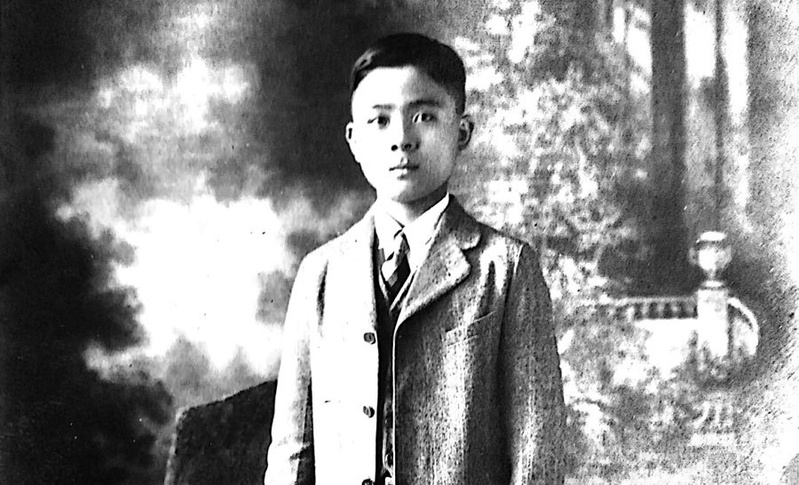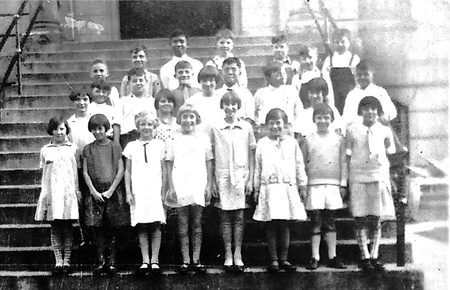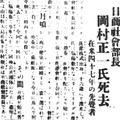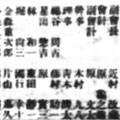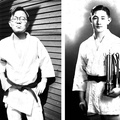In Part 5, I wrote about the pinnacle of Yoemon’s barbershop business in Walla Walla. This time I will focus on Yoemon’s other challenge: Atae’s education.
Education for Nisei
Another big challenge for Yoemon, in addition to making his business a success, was giving an education to his eldest son, Atae. He gave his son the name “Atae,” taking one letter from his own name, Yoemon, with the meaning “give everything.” While leaving his two daughters in Japan, Yoemon called over Atae from Japan with a strong intention to have him educated in America. The way Yoemon devoted his attention to his son was rather extreme. Yoemon wanted to educate Atae in America and have him take over his business.
Many Japanese women moved to Seattle as picture brides between around 1912 and 1920. The births of Nisei children became the foundation of Japanese families. Nisei children are Americans born in America. While they lived with their Issei parents as Japanese children, they spent a far greater amount of time learning the culture of American society once they stepped outside. Because of this, many Nisei didn’t know much about Japanese culture, and they grew up to be different from the Japan-born Issei. The education of Nisei who didn’t understand Japanese and Japanese culture was a big challenge in the Seattle Nikkei community.
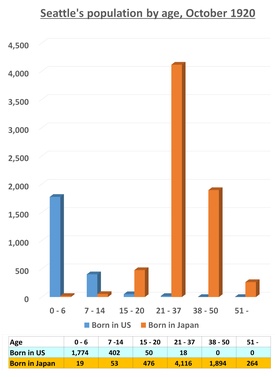
The city of Seattle in 1920 had 9,066 Japanese people, which was the most in the city’s history to that point. There were 4,143 Japanese between the ages of 21 and 37, those considered to be in the prime of life, and they were a major part of the labor force in Seattle’s nihonjin-machi. Most of them were Issei born in Japan. On the other hand, there were 2,248 Japanese children under the age of 15, most of whom were America-born Nisei. Atae was six at the time of this census and was one of the Nikkei Nisei.
For the education of Nisei, the Seattle Japanese Committee set up the Seattle Japanese School in 1908 and started to teach elementary school children reading and writing in Japanese. The school expanded with an increase in the Nisei population. In 1920, 806 of 41,809 children in public elementary schools in Seattle were Japanese, and 251 of them went to the Japanese school after school. Japan-born Issei wanted America-born Nisei to learn Japanese and Japanese culture.
Atae who was a Nisei himself, had returned to Japan in September 1920, when he was six years old and was able to experience Japanese culture in Kamai, even though it was only for three and a half years. He was able to go to a local elementary school, study reading and writing and learn Japanese naturally while playing with other children in the neighborhood. The fact that Atae had already learned what Nisei children studied in the Seattle Japanese school during his three and a half year stay in Kamai gave him a significant advantage, allowing Atae to experience a different life compared to many Nisei in Seattle back then.
Entering a public school in Walla Walla
Yoemon moved to Walla Walla in the summer of 1924 and enrolled Atae in a public school in Walla Walla. He was nine at the time. In those days, children in America entered public schools at age six, so Atae was three years behind. Yoemon believed that it would be better for Atae to start his American education from scratch.
He attended a public school called Baker School. I was able to find his detailed school records. Atae entered as a first grader and studied there for four years until 1928.
Atae’s American name, John Shinmasu, is written on the top left corner of each of his eighth-grade report cards, called “Pupil’s Report” from when he was in Baker School. His grade, class name, and the teacher’s signature are also there. On the bottom left is the signature Y. Shinmasu given for each quarter. Atae’s attendance records can be found at the top right corner. His grades are listed from the right center to the bottom right. There are nine subjects in total: arithmetic, language, geography, history, reading, spelling, music, drawing, and physical training. “Excellent” is given for 90 points or more, followed by “Good” for 80 points or more, “Fair” for 70 points or more, “Poor” for 60 points or more, and “Very Poor” for below 60 points.
Atae’s grades were average in the first grade, but they gradually improved, and he earned 90 points or more in almost all subjects from the second half of the second grade. Considering the fact that he had to do everything Americans did in a local school where nothing was taught in Japanese, Atae’s grades were surprisingly high. Because Atae spent the first six years of his life in Seattle, he apparently had a stronger sense of identity as an American than as a Japanese and was able to blend in with other children. Having studied Japanese in Japan for about three and a half years, he was bilingual in Japanese and English, which might have made him stand out back then.
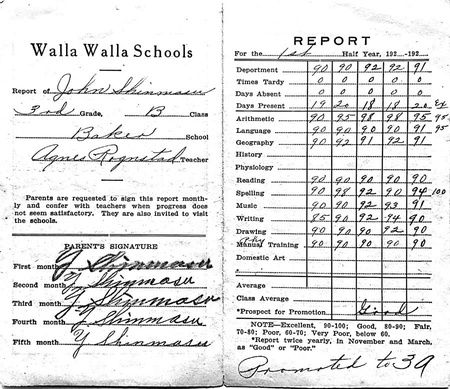
Atae received the perfect attendance award (no tardiness or absence) three times in a row starting when he was in second grade at the public school in Walla Walla. The award certificates have been kept. The note on the certificate shows he was in the fifth grade at the time, which means he was a fifth grader in the fourth year at the school in Walla Walla. Atae was doing well at school and was in good health.
Transfer to school in Seattle
In the summer of 1928, Yoemon moved from Walla Walla to Seattle, as he decided to make Seattle his main workplace again. At the time, Atae apparently didn’t want to leave Walla Walla, where he made his home. It was hard for him to say goodbye to his friends and their families. But he followed Yoemon and transferred schools from Walla Walla to Seattle in September 1928.
I found his report card from a school in Seattle, dated September 1928. His grades weren’t as good as when he was in Walla Walla, but Atae was allowed to go on to the 6A class from January 1929. At 13, Atae moved to the 6B class. He turned 14 on September 6. There is a photo of him taken around this time.
There is also a group photo, and Atae is near the center of the second row. I was surprised when I saw the photo. Boys and girls in the upper grades in elementary school were lining up together, with the girls, who made up more than half of the group, in the center of the front row and boys in the back. This formation was unheard of in the upper grades of elementary school in Japan at the time. Atae got along well with an American boy, and they became friends. Atae quickly adapted to the new environment and was able to make friends. Atae and the boy became family friends. A photo of the boy’s mother and his siblings was sent to Atae after he left Seattle.
On the very top of the back of his report card, the days of attendance were written, yet there were a few things that caught my attention. He had perfect attendance, yet seven days of absence were recorded in November and December of 1928. He only attended school for five days in January 1929. There was a parent’s signature below it, and Yoemon’s signature was replaced with Aki’s in November and December. On the very bottom was a note informing of a school transfer and withdrawal from school as of February 1. It shows that there was a big change in Atae’s life at the end of 1928.
Yoemon was worried that Atae, who started school a bit later than other children, might not be able to adapt in an American school, but was relieved that Atae naturally blended in and did well academically, too.
There was a big reason behind Yoemon’s move from Walla Walla to Seattle in the summer of 1928, when he almost forcibly told Atae to transfer schools. Yoemon had a big business challenge. He was planning to start a hotel business in Seattle.
References:
Kojiro Takeuchi, Beikoku seihokubu nihon iminshi (History of Japanese Immigrants in Northwestern America), Taihoku-nippo sha, 1929.
Communication Committee of the Japanese in Northwestern America, comp, Beikoku seihokubu zairyu nihonjin hattenryakushi (Brief History of Japanese Residents in Northwestern America), 1923.
Eizaburo Okuizumi, ed,, Shiatoruban Nihongo dokuhon (Seattle's Japanese Language Readers1920-30), Bunsei-shoin, 2012.
*This series is a collaboration between Discover Nikkei and The North American Post, Seattle’s bilingual community newspaper. It is an excerpt from “Studies on Immigrants in Seattle – Thoughts on Yoemon Shinmasu’s Success of Barbershop Business,” the writer’s graduation thesis submitted at the Distance Learning Division at the Nihon University as a history major and has been edited for this publication. The Japanese version was published on October 25, 2019 on the The North American Post.
© 2019 Ikuo Shinmasu


